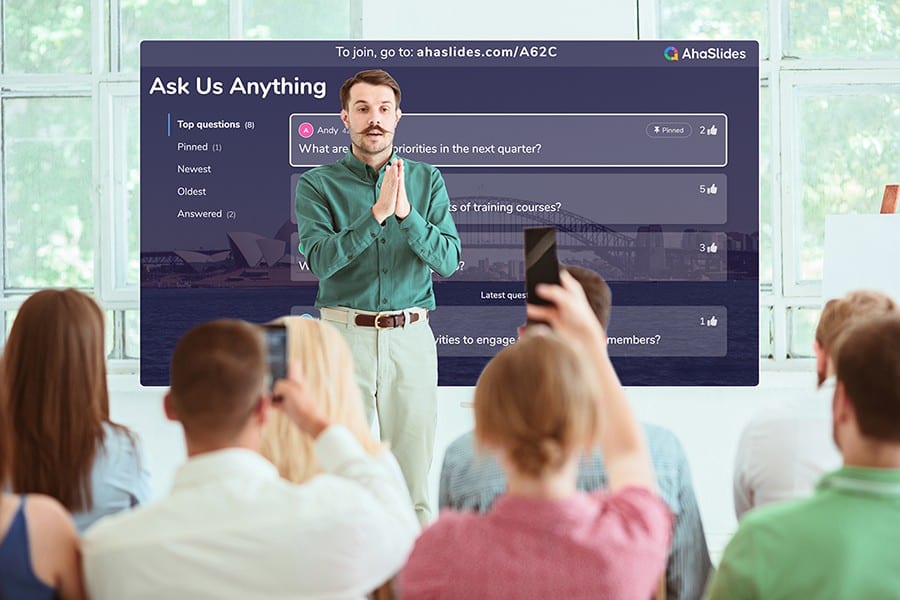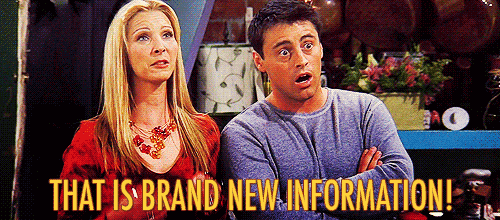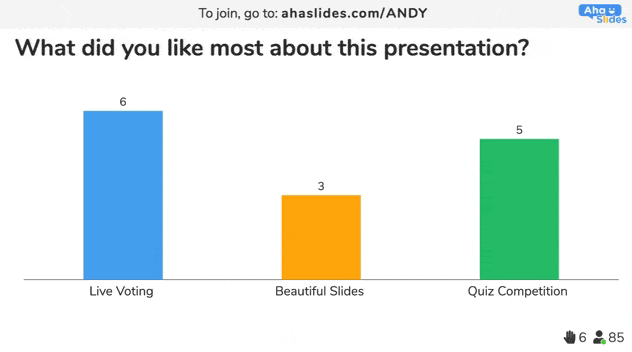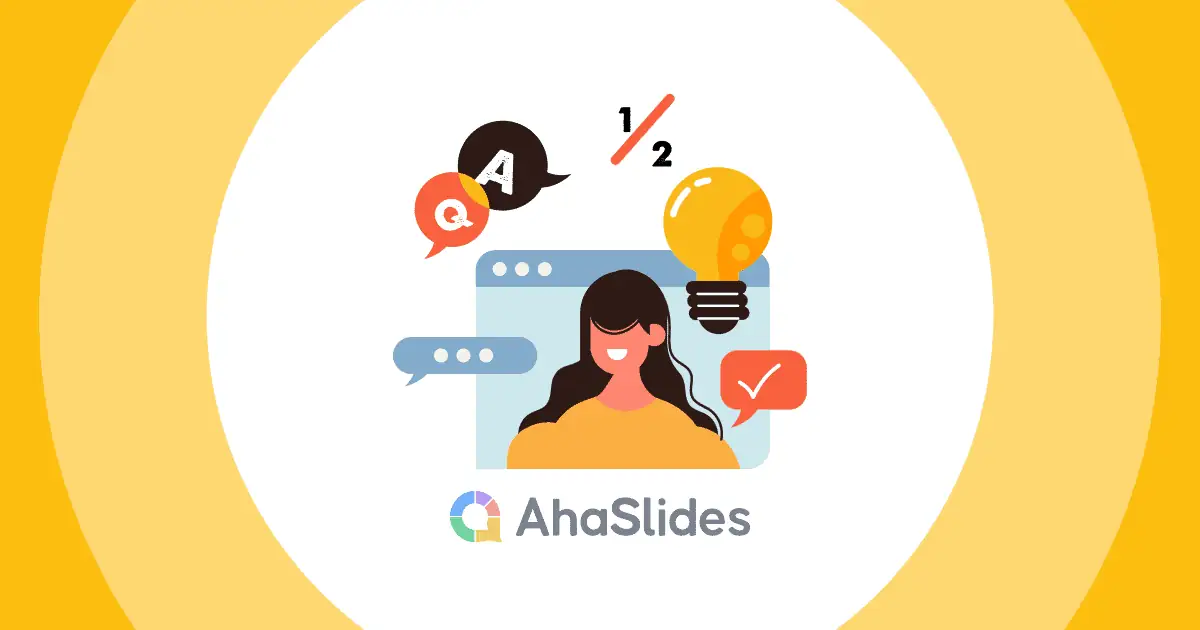त्यसो भए, कसरी राम्रोसँग भाषण गर्ने? बुहु! यसको विपरीत, आउनुहोस् सिकौं खराब भाषणहरू (उर्फ खराब भाषणहरू)!
कसैलाई पनि नराम्रो भाषण मन पर्दैन। तपाईंले आफ्नो भाषण पहिलो पटक वा दस लाखौं पटक दिए पनि, तपाईंले अझै पनि धेरै साना गल्तीहरू गर्न सक्नुहुन्छ। अनजानमा आफ्ना श्रोताहरूलाई धेरै जानकारीले भर्नेदेखि लिएर हास्यास्पद तर अप्रासंगिक छविहरू सम्मिलित गर्नेसम्म, यी खराब भाषणहरूमा हुने सात सबैभन्दा सामान्य गल्तीहरू हुन् र तिनीहरूबाट कसरी बच्ने।
- दर्शकको ध्यान गुमाउनु
- जानकारी ओभरफ्लो
- रूपरेखा छैन
- दृश्य सहायता छैन
- विशेष वातावरण
- ध्यान भंग गर्ने शिष्टाचार
- सामग्रीहरूमा डेलिभरी
- AhaSlides मा अधिक
यस ब्लग पोस्टमा, हामी निम्न खराब गल्तीहरूलाई समेट्नेछौं:
विषयसूची
- परिचय
- दर्शकको ध्यान गुमाउनु
- जानकारी ओभरफ्लो
- रूपरेखा छैन
- दृश्य सहायता छैन
- विशेष वातावरण
- ध्यान भंग गर्ने शिष्टाचार
- सामग्रीहरूमा डेलिभरी
- अप्रभावी वक्ताहरूको विशेषताहरू
- प्राय : सोधिने प्रश्नहरू
AhaSlides मा अधिक
त्यसोभए, भयानक सार्वजनिक वक्ता बन्न बन्द गर्नुहोस्, सार्वजनिक बोल्ने गल्तीहरू र खराब भाषणहरूबाट बच्नुहोस्, र आज AhaSlides मार्फत उत्कृष्ट भाषण वितरण प्रविधिहरूको साथ भाषण प्रस्तुतीकरणको रूपरेखा कसरी बनाउने भनेर सिक्नुहोस्!

सेकेन्डमा सुरु गर्नुहोस्।
तपाईंको अर्को अन्तरक्रियात्मक प्रस्तुतिको लागि नि: शुल्क टेम्प्लेटहरू प्राप्त गर्नुहोस्। नि:शुल्क साइन अप गर्नुहोस् र टेम्प्लेट लाइब्रेरीबाट आफूले चाहेको कुरा लिनुहोस्!
🚀 नि: शुल्क टेम्प्लेटहरू प्राप्त गर्नुहोस्
नराम्रो बोली - गल्ती १: आफ्नो श्रोतालाई बिर्सनु
सामान्यतया, त्यहाँ 2 अतिवादीहरू छन् जुन तपाईं जस्तो प्रेक्षकहरूले पीडित हुनेछन् जब तपाईंको दर्शकहरूको रूचि सम्बोधन गर्दा:
- जेनेरिक डेलिभर गर्दै, साधारण ज्ञान जसले कुनै थपिएको मान ल्याउँदैन, वा
- अमूर्त कथाहरू र अस्पष्ट टर्मिनलहरू प्रदान गर्दै जुन दर्शकहरूले बुझ्न सक्दैनन्
Therefore, you should always bear in mind that it��s the AUDIENCE that matters, and only deliver a speech that caters to their needs.
उदाहरणका लागि, यदि तपाइँ कलेज सेटिङमा प्रस्तुत गर्नुहुन्छ भने तपाइँको विषयसँग सम्बन्धित गहन शैक्षिक विषय उपयुक्त हुनेछ। यद्यपि, अन्तरदृष्टिपूर्ण व्यापार रिपोर्टहरू र विश्लेषणहरू व्यापार टोली बैठकको लागि आवश्यक छन्। त्यस्तै गरी, सामान्य श्रोताको लागि, तपाईंको भाषणले बुझ्न सजिलो भाषा प्रयोग गर्नुपर्छ।

गल्ती १:नराम्रा भाषणहरू - तपाईंको श्रोतालाई जानकारीले भरिपूर्ण बनाउने
यो एउटा नराम्रो परिचयात्मक उदाहरण हो! यसलाई स्वीकार गरौं, र हामी सबैले त्यहाँ पुगेका छौं। हामीलाई डर थियो कि हामी दर्शकहरूले हाम्रो भाषण बुझ्न सक्नेछैनौं, त्यसैले हामीले यसलाई सकेसम्म विस्तृत बनाउने प्रयास गर्यौं। फलस्वरूप, दर्शकहरू धेरै जानकारीले भरिएका हुन्छन्। यो बानीले मानिसहरूसँग जोडिने र प्रेरित गर्ने तपाईंको क्षमतालाई कमजोर बनाउँछ।
यो सबैभन्दा सामान्य गल्तीहरू मध्ये एक हो जुन विद्यार्थीहरूले आफ्नो पहिलो भाषणमा धेरै ढाक्न खोजिरहेका छन्। परिचयको भाषण दिने वक्ताले यो गल्तीबाट बच्नुपर्छ।
बरु, आफ्ना दर्शकहरूलाई चिन्नुहोस्। मान्नुहोस् कि तपाईं तिनीहरू मध्ये एक हुनुहुन्छ। उनीहरूलाई के थाहा छ भन्ने अनुमान गर्नुहोस्, र गेट-टु-द-पोइन्ट भाषणहरू! त्यसोभए, तपाईंसँग जानकारीको उचित मात्रा कभर गर्न र एक प्रेरक र अन्तरदृष्टिपूर्ण भाषण, चोक-फ्री प्रदान गर्ने आधार हुनेछ।
सुझावहरू: सोध्दै खुला प्रश्नहरु नराम्रो भाषणबाट बच्ने तरिका हो, मौन भीडबाट संलग्नतालाई प्रोत्साहित गर्ने पनि!

गल्ती ३: नराम्रो बोली - रूपरेखा बिनाका बोलीहरू हुन्
एक चाबी गल्ती छ कि धेरै आत्मविश्वास वक्ताहरूले गर्छन् कि तिनीहरू सोच्छन् कि तिनीहरूले एक तैयार रूपरेखा बिना भाषण वितरित गर्न सक्छन्। उनीहरू जेसुकै भावुक भएर बोले, तिनीहरूको सन्देशमा तर्कको अभावको लागि कुनै मेकअप हुँदैन।
तपाईंको श्रोताले तपाईंको कुरा दोहोर्याएर अनुमान लगाउनुको सट्टा, सुरुदेखि नै एउटा कुरा राख्नुहोस्। तपाईंको विषयको लागि स्पष्ट र तार्किक संरचना स्थापित गर्नुहोस्। तपाईंको भाषणको रूपरेखा पनि दिन सिफारिस गरिन्छ, ताकि तपाईंका श्रोताहरूले तपाईंको भाषणलाई बाटोमा पछ्याउन सकून्।
गल्ती १:नराम्रो बोली - तपाईंको दृश्य सहायता कहाँ छ?
नराम्रो भाषण निम्त्याउने अर्को गल्ती भनेको दृश्य सामग्रीको अभाव वा खराब प्रयोग हो। प्रस्तुतीकरणमा दृश्य तत्वहरूको महत्त्व सबैले बुझ्छन्, तर कोही-कोहीले त्यसमा उचित ध्यान दिँदैनन्।
केही स्पिकरहरू कागज ह्यान्डआउट्स वा अझै छविहरूको जस्तो सादा र कष्टकर भिजुअल एडहरूमा निर्भर हुन्छन्। तर यो तपाईं होइन। अभिनव दृश्य उपकरणहरू जस्तै तपाईंको भाषण ताजा गर्नुहोस् सामग्री जान्नुहोस् X भिडियोहरू समावेश गर्न, अन्तरक्रियात्मक मूल्याङ्कन स्केल, प्रत्यक्ष क्विज, प्रत्यक्ष शब्द बादल, प्रत्यक्ष मतदान, आदि... तपाईंको दर्शकहरूमा सबैभन्दा बढी प्रभाव पार्न।
तर सावधान पनि रहनुहोस्। दृश्य जानकारीलाई छलफल भइरहेको मुद्दासँग कम सम्बन्ध राख्न नदिनुहोस्, वा अत्यधिक नबनाउनुहोस्। त्यसैले, दृश्य भाषण वास्तवमा अनिवार्य छ।

गल्ती ५: नराम्रो बोली - विशेष वातावरण 🙁
कसैलाई पनि बहिष्कृत महसुस गर्न मन पर्दैन, विशेष गरी तपाईंको श्रोता। त्यसैले तिनीहरूलाई त्यसो हुन नदिनुहोस्। आफ्नो सन्देश राम्रोसँग व्यक्त गर्न श्रोताहरूसँग सम्पर्कमा रहनुहोस्। यो मौखिक र गैर-मौखिक अभिव्यक्ति दुवैको साथ गर्न सकिन्छ।
मौखिक रूपमा, तपाईं र श्रोताहरू छलफल र अन्तरक्रिया गर्न सक्नुहुन्छ a मार्फत प्रत्यक्ष प्रश्नोत्तर सत्र महत्त्वपूर्ण मुद्दाहरूलाई जोड दिन। नि: शुल्क सर्वेक्षण उपकरण AhaSlides बाट, दर्शकहरूले आफ्ना प्रश्नहरू आफ्नो फोनमा टाइप गर्न सक्छन्, र तिनीहरू तपाईंको प्रस्तुतकर्ताको स्क्रिनमा देखा पर्नेछन्। यस तरिकाले, तपाईंले उठाइएका प्रश्नहरूको सिंहावलोकन पाउन सक्नुहुन्छ, र तपाईंले जवाफ दिन चाहनुभएको प्रश्नहरू छनौट गर्न पहल गर्न सक्नुहुन्छ। थप रूपमा, तपाईं एक प्रत्यक्ष सर्वेक्षण गर्न सक्नुहुन्छ र उत्साहजनक र आकर्षक वातावरण सिर्जना गर्न केही अन्तरक्रियात्मक खेलहरू आयोजना गर्न सक्नुहुन्छ।
मौखिक रूपमा होइन, आफ्नो शरीरको भाषा मार्फत आफ्ना श्रोताहरूसँग अन्तरक्रिया गर्नुहोस्। झुक्नु वा मुख तिरमिराउनु जस्ता अवचेतन इशारालाई गलत बुझ्न सकिन्छ र खराब भाषण निम्त्याउन सक्छ। अभ्यास गर्नुहोस्, आफ्नो आत्मविश्वास प्राप्त गर्नुहोस्, र आफ्नो भाषण अझ प्रभावकारी रूपमा प्रस्तुत गर्नुहोस्।

तपाईंको प्रतिक्रियालाई प्राप्त गर्न तपाईंको दर्शकहरूको लागि उत्साहपूर्ण वातावरण सिर्जना गर्नुहोस्!
गल्ती 6: ध्यान विचलित गर्ने म्यानमेनिज
त्यसो भए, व्यवहारवादका उदाहरणहरू? ध्यान भंग गर्ने व्यवहारवाद आफैंमा एक वर्णनात्मक शब्द हो। तिनीहरूले मुख्यतया केही शारीरिक इशाराहरू र चालहरूलाई जनाउँछन् जसले दर्शकहरूलाई निराश बनाउँछ र तपाईंले भनिरहनुभएको कुराबाट उनीहरूको ध्यान हटाउँछ।
विचलित गर्ने व्यवहारहरू अनावश्यक इशाराहरू हुन सक्छन् जस्तै:
- अगाडि रक गर्दै
- तपाईंको आस्तीन माथि तान्दै
- तपाईको हातलाई डुलिरहेको छ
विचलित गर्ने ब्यवस्थाले असुरक्षाको स indicate्केत गर्न सक्छ, सहित:
- लालटेनको बिरूद्ध झुकाव
- दुबै हातहरूसँग उभिरहेको तपाईंको कम्मर मुनि लुक्दै
- आँखा सम्पर्क बाट जोगिदै
यद्यपि तिनीहरू अनजानमा हुन सक्छन्, तिनीहरूलाई ध्यान दिएर हेर्नुहोस्। यसले समय लिन्छ तर कडा परिश्रमको लायक छ!

गल्ती 7: सामग्री माथि डेलिभरी
प्रस्तुतीकरणहरूमा लोकप्रिय मार्गनिर्देशनहरूले कसरी तपाईंलाई डेलिभरी गर्ने भन्ने बारे सिकाउँदछन्। जे होस्, तिनीहरू गम्भीर बिन्दु सम्झन्छन्: कसरी उत्कृष्ट सामग्री क्राफ्ट गर्ने।
तपाइँको अभिव्यक्ति मा अत्यधिक निर्भरता तपाइँ तपाइँको सामग्री गुणवत्ता सुधार गर्न बाट विचलित हुन सक्छ। दुबै पक्षहरूमा तपाईंको सक्दो गर्न कोसिस गर्नुहोस् र तपाईंको प्रदर्शनलाई अद्भुत सामग्री र अद्भुत प्रस्तुतीकरण कौशलको साथ नल गर्नुहोस्!
नराम्रो भाषण के ले बनाउँछ भन्ने कुरा थाहा पाउनाले तपाईंलाई राम्रो भाषण बनाउने नजिक ल्याउँछ। साथै, कृपया सधैं आफ्नो भाषण बन्द गर्न नबिर्सनुहोस्! अब AhaSlides लाई तपाईंको भाषण अझ उत्कृष्ट प्रस्तुति बनाउन दिनुहोस्! (र यो नि:शुल्क छ!)
अप्रभावी वक्ताहरूको विशेषताहरू
अप्रभावी वक्ताका विशेषताहरू? धेरै विशेषताहरूले वक्तालाई अप्रभावी बनाउन सक्छन्, जसले गर्दा खराब भाषणहरू हुन सक्छन् र श्रोताहरूलाई प्रभावकारी रूपमा आफ्नो सन्देश दिन असफल हुन सक्छन्। यी केही विशेषताहरू समावेश छन्:
- तयारीको अभाव: आफ्नो प्रस्तुतिको लागि पर्याप्त तयारी नगर्ने वक्ताहरू अव्यवस्थित र अप्रस्तुत देखिन सक्छन्, जसले गर्दा श्रोताहरूमा भ्रम र स्पष्टताको कमी हुन्छ।
- आत्मविश्वासको कमी: आफू र आफ्नो सन्देशमा विश्वास नभएका वक्ताहरू हिचकिचाहट, घबराहट वा आफैंमा अनिश्चित हुन सक्छन्, जसले उनीहरूको विश्वसनीयता र अधिकारलाई कमजोर पार्न सक्छ।
- कमजोर शारीरिक भाषा: आँखाको सम्पर्कको अभाव, बेचैनी, वा नर्भस इशाराहरू जस्ता असावधानिक संकेतहरूले वक्ताको सन्देशबाट ध्यान हटाउन र श्रोतालाई विचलित गर्न सक्छन्।
- अनुपयुक्त भाषा: अनुपयुक्त वा आपत्तिजनक सामग्री प्रयोग गर्नाले दर्शकहरू अलग हुन सक्छन् र वक्ताको विश्वसनीयतामा हानि पुर्याउन सक्छन्।
- संलग्नताको कमी: एक वक्ता जसले आफ्ना श्रोताहरूसँग संलग्न हुन असफल हुन्छ उनीहरूलाई निरुत्साहित र विच्छेदन महसुस गर्न सक्छ, जसले प्रस्तुत सामग्रीसँग संलग्नताको कमी निम्त्याउँछ।
- भिजुअल एड्समा अत्याधिक निर्भरता: पावरपोइन्ट प्रस्तुतीकरणहरू वा भिडियोहरू जस्ता भिजुअल एड्समा धेरै निर्भर हुने वक्ताहरू आफ्ना दर्शकहरूसँग व्यक्तिगत रूपमा जडान हुन असफल हुन सक्छन्, जसले गर्दा संलग्नताको कमी हुन्छ।
- खराब डेलिभरी: अप्रभावी स्पिकरहरूको विशेषताहरू मध्ये एक खराब डेलिभरी हो। धेरै छिटो बोल्ने, गनगन गर्ने वा मोनोटोन आवाज प्रयोग गर्ने वक्ताहरूले श्रोताहरूलाई उनीहरूको सन्देश बुझ्न र अनुसरण गर्न गाह्रो बनाउन सक्छ।
समग्रमा, प्रभावशाली वक्ताहरू राम्ररी तयार, आत्मविश्वासी, संलग्न र व्यक्तिगत स्तरमा आफ्ना श्रोताहरूसँग जडान गर्न सक्षम छन्, जबकि प्रभावहीन वक्ताहरूले यी मध्ये एक वा बढी विशेषताहरू प्रदर्शन गर्न सक्छन् जुन उनीहरूको सन्देशबाट विचलित हुन्छन् र आफ्ना श्रोताहरूलाई संलग्न गराउन असफल हुन्छन्।
सन्दर्भ: अप्रभावी वक्ताहरूको बानी

प्रस्तुतिमा राम्रो हुन सुझावहरू!
तपाईंको अर्को अन्तरक्रियात्मक प्रस्तुतिको लागि नि: शुल्क टेम्प्लेटहरू प्राप्त गर्नुहोस्। नि:शुल्क साइन अप गर्नुहोस् र टेम्प्लेट लाइब्रेरीबाट आफूले चाहेको कुरा लिनुहोस्!
🚀 नि: शुल्क टेम्प्लेटहरू प्राप्त गर्नुहोस्
बारम्बार सोधिने प्रश्नहरू:
खराब सार्वजनिक वक्ता के हो?
खराब सार्वजनिक वक्ता बनाउने महत्त्वपूर्ण कुरा कम तयारी हो। तिनीहरूले भाषणको सावधानीपूर्वक अभ्यास गरेनन् र कसैले तिनीहरूलाई सोध्न सक्ने प्रश्नहरूको लागि तयारी गरेनन्। त्यसैले नराम्रो बोलीको जन्म भयो।
के सार्वजनिक भाषणमा खराब हुनु ठीक हो?
त्यहाँ धेरै व्यक्तिहरू छन् जो सफल हुन्छन् तर सार्वजनिक भाषणमा उत्कृष्ट हुँदैनन्। यदि तपाइँ तपाइँको काम को केहि व्यावसायिक पक्षहरु मा साँच्चै राम्रो हुनुहुन्छ भने, तपाइँ अन्तिम सार्वजनिक बोल्ने कौशल बिना सफल हुन सक्नुहुन्न।
भाषण के हो?
प्रस्तुतकर्ताहरूले आफ्नो विचार र विचार व्यक्त गर्नको लागि औपचारिक भाषण।
बोली कति प्रकारका हुन्छन्?
जानकारीमूलक भाषण, प्रेरणादायी भाषण, प्रेरक भाषण, विशेष अवसर भाषण, र मनोरञ्जनात्मक भाषण।








